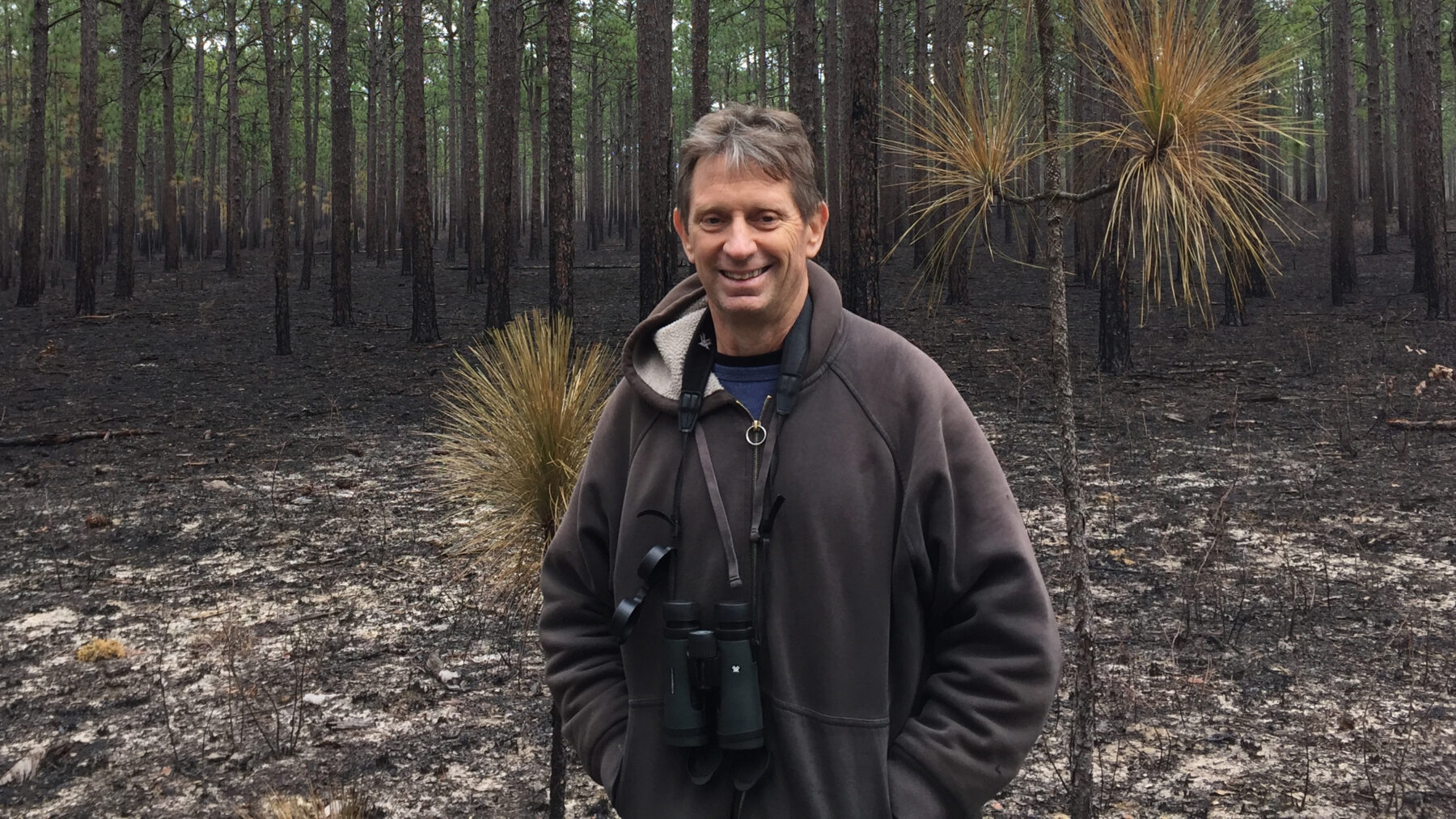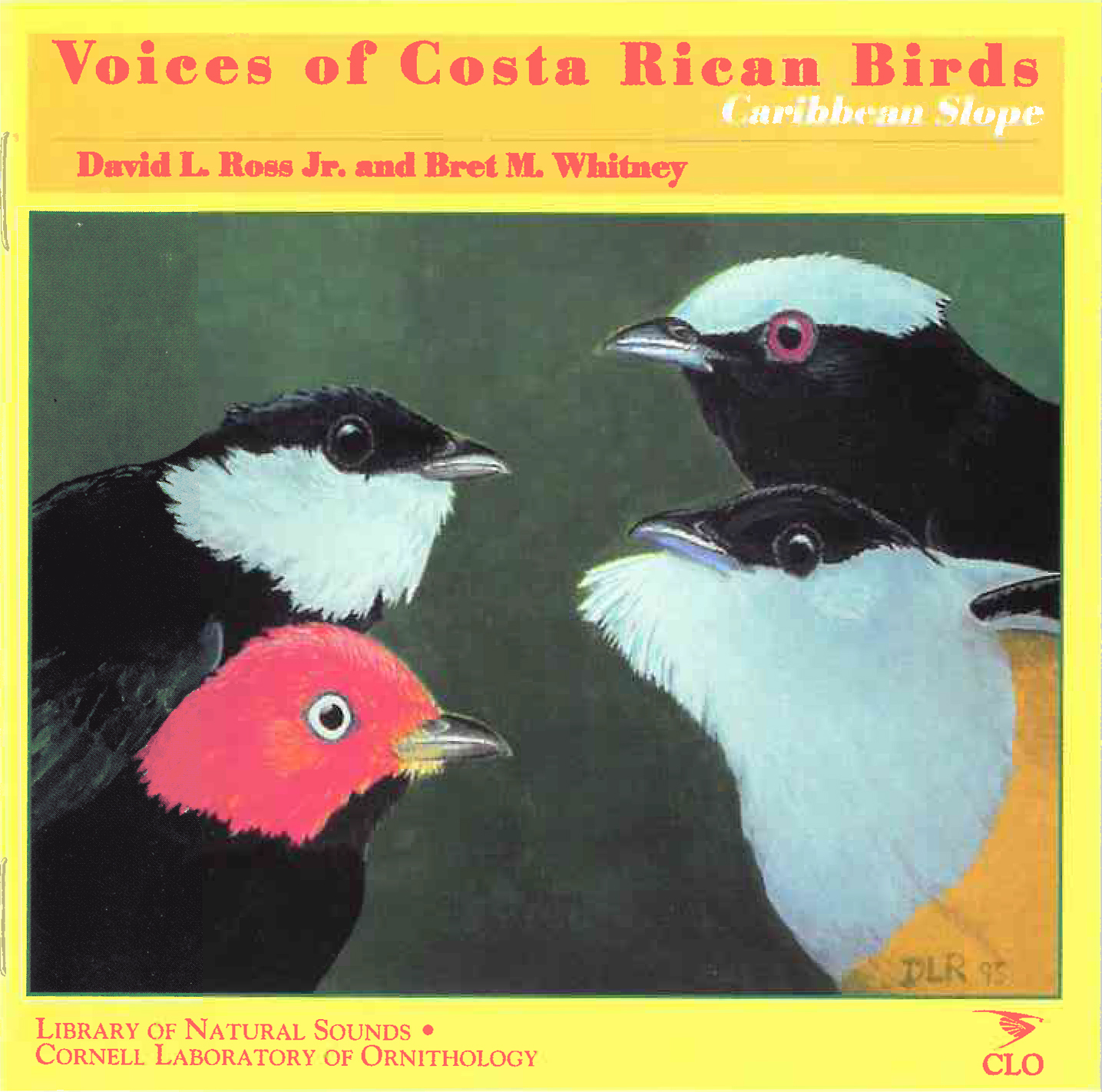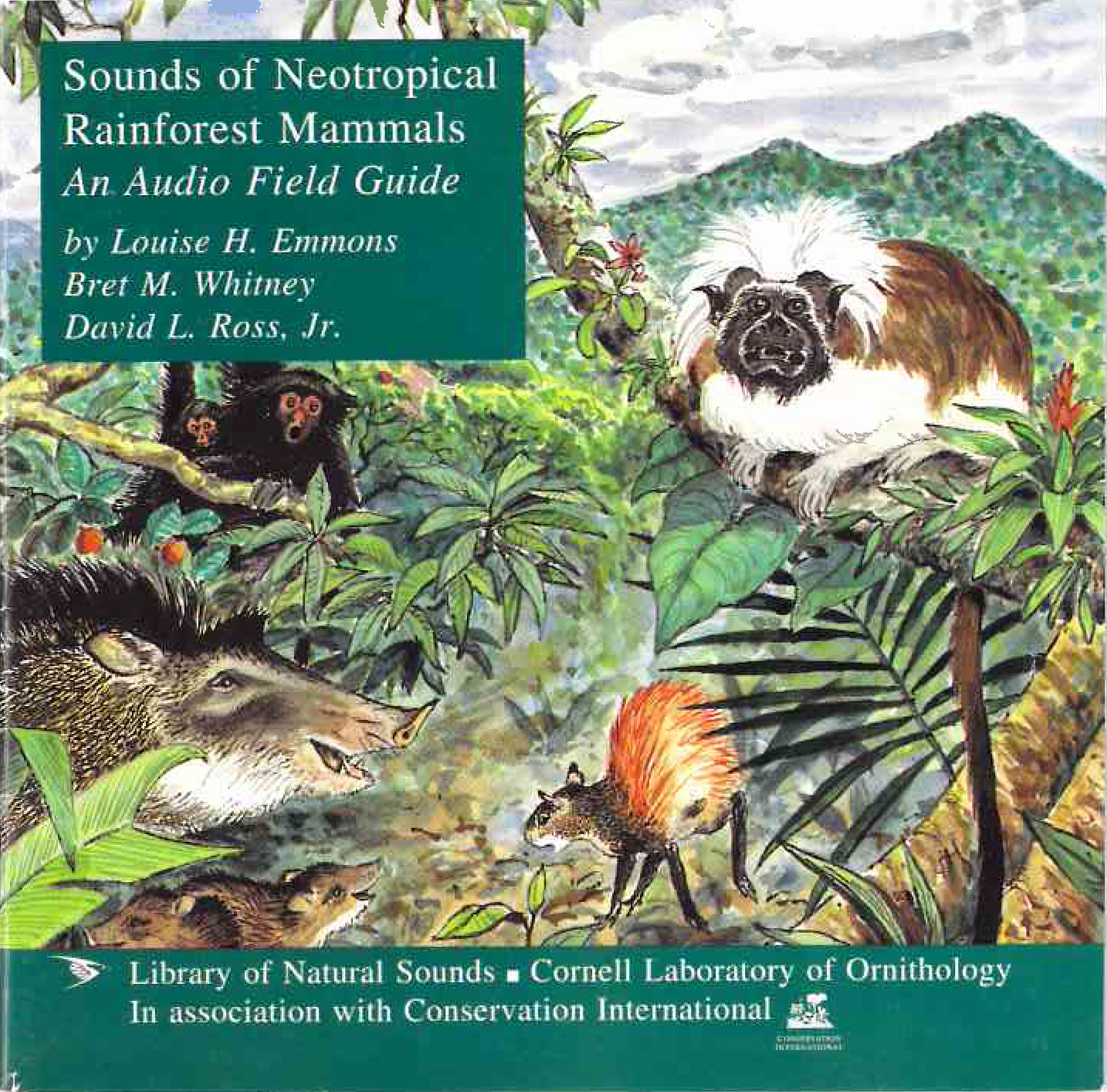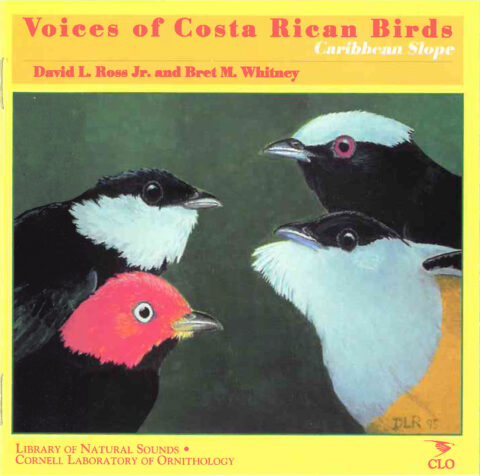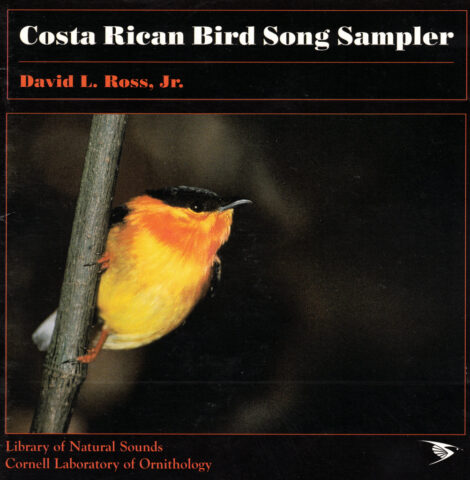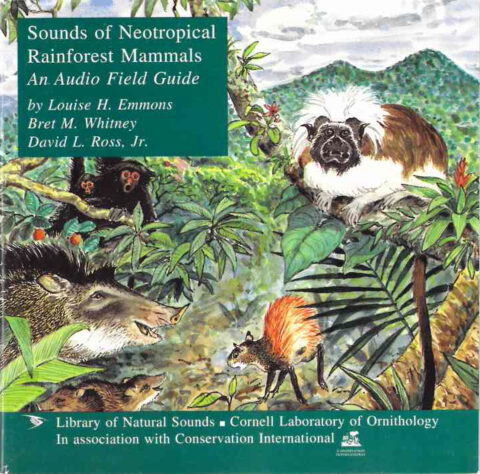In 1992, David L. Ross, Jr. and the Cornell Lab of Ornithology released a groundbreaking audio production: Voices of the Cloud Forest, a stereo audio journey through a day in Costa Rica’s Monteverde Cloud Forest Reserve. Now, on the 30th anniversary of the original release of Voices of the Cloud Forest, the Macaulay Library is very pleased to partner with Dave Ross to make this classic audio production available as a free download to all. The release of this Voices of the Cloud Forest download represents the capstone of a recording career spent capturing and sharing natural sounds with the goal of inspiring others to protect the special places and species in our world.
Download Voices of the Cloud Forest
I recently sat down with my former colleague, sound recording mentor, and longtime friend Dave Ross to learn more about Voices of the Cloud Forest and to chronicle his sound recording career, which spans 35 years and includes more than 4,000 recordings archived at the Macaulay Library. His story is one of motivation, inspiration from kindred spirits, a deep sense of wonder and love for nature, and an underlying purpose and mission to preserve sounds.
Growing up in the natural world
Dave Ross’s spark bird, fittingly enough, was a mystery sound. As a young boy growing up on Long Island, New York, Dave spent many hours exploring forests and meadows near his family’s home. One day, while out for a walk with his mother and a neighbor, a sound caught his attention. It was a clear, whistled song that sounded like “Tea Time.” They weren’t able to track down the Tea Time songster that day, but after a visit to the local library, and a review of the Peterson/Cornell Lab A Field Guide to Bird Songs, they identified their mystery singer as a Black-capped Chickadee. In recounting this story, Dave noted that “it was that sense of wondering and questioning that I think drove a lot of my sound recording and nature interest through the years. The ‘What is that?’ and ‘What is it doing?’ and the sense of growth and being able to learn.”
Dave’s interest in nature and bird songs continued to grow during his teenage years, leading him to the wildlife biology program at West Virginia University. After graduating from WVU, he returned home to Long Island and decided to start a landscaping business. This seemingly unusual choice for a wildlife biologist was actually the perfect arrangement for an energetic adventurer who felt that there was so much to do in life that the only question was “What would I do first?” At that time, New York’s long, cold winters meant a five-month break from mowing lawns, allowing him time to pursue his passion for birds.
In early 1987, Dave saw an advertisement in Audubon Magazine for the Cornell Lab of Ornithology’s annual sound recording workshop. He was intrigued by the idea of sound recording, thinking that it offered a greater opportunity to make an impact in the bird world than photography. So in June 1987, Dave traveled to the Ithaca area to attend the Library of Natural Sounds (LNS) Sound Recording Workshop. There he learned from LNS curator Greg Budney, bonded with kindred spirits like Bill Evans and Mary Katz, and returned home energized to record bird sounds.
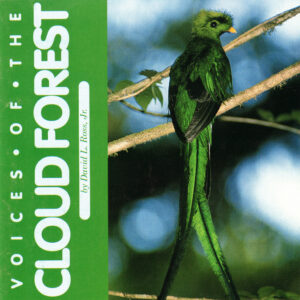
Creating Voices of the Cloud Forest
When the snowflakes started to fly on Long Island in December 1987, Dave traveled to Costa Rica for the first time, and immediately fell in love with two special places: Corcovado National Park and the Monteverde Cloud Forest Reserve. It was during his first visit to Monteverde that he began dreaming about creating a stereo production that would capture the sounds of the cloud forest. Dave had heard and been heavily influenced by Ted Parker’s legendary Voices of the Peruvian Rainforest cassette. But to Dave, it was important to create a cloud forest production in stereo. Why? “Mono,” Ross says, “is not truly the way that I hear things. There are some very simple things sometimes that just come through wonderfully in stereo, just beautifully in stereo, that can’t be matched in mono.”
Over the next four years, Dave made annual four-month long visits to Costa Rica to gather material for a cloud forest production. He started by making high-quality mono species recordings with a parabola or shotgun microphone, and then turned his focus to capturing stereo “bed tracks” of the different insect and frog choruses heard at various times of the day. Back in New York, he made regular visits to the Cornell Lab to archive the recordings that would form the backbone of Voices of the Cloud Forest. In those days, audio archival was a laborious manual process involving tape-to-tape copies and paper data forms. But it also had some unexpected benefits. During his visits to the Cornell Lab, Dave crossed paths with other archival visitors, including famed Neotropical ornithologist Ted Parker and Dutch Birding editor Arnoud van den Berg. Because archival studios were the only place to get recordings archived, visiting recordists often worked long hours in the studio, leading to late-night conversations and camaraderie. The sense of shared purpose that developed in those studio encounters with Ted, Arnoud, and others still resonates with Dave to this day. “We all had the shared mission of contributing to the archive. That was just a wonderful sense of purpose, in that we were collecting these sounds to be valuable into perpetuity,” said Ross.
The final step in creating Voices of the Cloud Forest was arguably the hardest: combining hundreds of different tape recordings (there were no digital sound files in the early 1990s) from different times, days, years, and locations into a single continuous recording. For this part of the process, Dave was fortunate to work with LNS audio engineer Bob Grotke, who Dave remembers as “an incredible sound engineer.” Together, they created a storyboard for the 33-minute continuous recording, including transitions from one stereo bed track to another, and insertion points for nearly 40 different focal species. Then, drawing on over two decades of audio engineering experience, Grotke created the final audio master in the analog tape domain, a truly remarkable feat. Even though it has been 30 years since its release, Voices of the Cloud Forest remains fresh in Bob Grotke’s mind. “The entire production is top shelf,” Grotke says, “from concept to sound quality, content, and graphic design.” The end result is a timeless classic that transports listeners to the cloud forest, even if they’ve never set foot in Monteverde.
Archival and production efforts at the Library of Natural Sounds
After spending so much time in the archival studio as a visiting recordist, it was only natural that Dave joined the archival team at LNS as a staff member in the mid-1990s. In his role as an archivist, he focused on field recordings of other prominent sound recordists, including Ted Parker, who died in a tragic plane crash in Ecuador in 1993. But it was the collection of another pioneering Neotropical ornithologist, Paul Schwartz, that Dave is most proud of having archived. When asked about Schwartz, Ross said “he was definitely a recording hero of mine…. I don’t know that there was another recordist that I felt as strongly about.” An American who lived in Venezuela for decades, Paul Schwartz amassed more than 6,000 recordings while systematically documenting the country’s avifauna. Many of Schwartz’s recordings remain the very best examples of a species, even 40-50 years after he made them, in spite of modern recordists having access to more sophisticated and portable technology. The technical excellence of Schwartz’s recordings, together with his systematic approach to collecting them, had a major, long-term impact on Dave’s career direction as a sound recordist.
Schwartz’s influence on Ross’s recording career can be seen in the projects that Dave pursued during the 1990s. After the release of Voices of the Cloud Forest, Dave traded in his stereo microphones for a parabola to systematically document individual species for traditional audio field guides. The first of these guides was Voices of Costa Rican Birds: Caribbean Slope, co-authored with Neotropical ornithologist Bret Whitney in 1995 (and dedicated to the memory of Paul Schwartz and Ted Parker). This 2-CD production contained the songs and calls of more than 220 species of birds, and represented the most comprehensive audio guide to the Costa Rican avifauna at the time of its release. This was followed in 1998 by Costa Rican Bird Song Sampler, which squeezed the sounds of 184 of Costa Rica’s most common species onto a single CD. In that same year, Dave partnered with Bret Whitney and famed mammalogist Dr. Louise Emmons to create another groundbreaking production, Sounds of Neotropical Rainforest Mammals: An Audio Field Guide. This guide to over 100 mammal taxa serves as a valuable reference to mammalogists and naturalists, as the sounds of rainforest mammals can be critically important for their detection and identification.
A new phase in life
As one of seven children, Dave has always valued the importance of family. In the late 1990s, he made his last trip to Costa Rica and left the Cornell Lab to focus on his own growing family. He moved to North Carolina and started a blended “his, hers, ours” family that includes five sons. Dave possesses boundless energy, which has allowed him to work a day job, continue his landscaping business, coach youth soccer teams, take the boys to various sports and music practices, and go sound recording in his free time. While family life has changed the amount of time available for getting in the field, it has in no way dampened Dave’s enthusiasm for sound recording. Dave now relishes short overnight outings to record frogs and nightbirds as much as he once enjoyed his trips to Costa Rica.
Dave’s move to North Carolina also created “a sense of newness, of being in a new habitat, a new environment, new sounds.” This newness has meant new recording favorites for Dave–the beautiful songs of Bachman’s Sparrows, the mellow trills of Southern Toads, and the primeval croaks of a chorus of River Frogs. The recordings that he remembers most now are when he has been fortunate enough “to capture something that seemed to be a little bit more than one bird singing, that may have been that opportunity to hear or capture an event.” When he talks about some of the special events that he has experienced and captured, Dave’s pure love of recording natural sounds shines through: “I can’t think of many more worthwhile pursuits in nature.”
As our conversation came to a close, I asked Dave if he had any counsel for someone interested in sound recording. His response is wonderful advice for those who are new to the field but also inspiring to those who have recorded for many years: “Sound recording is very rewarding. Sound recording takes a lot of patience, it takes a lot of focus, but it’s something that can bring hours of satisfaction. It can bring satisfaction in the moment, it can bring satisfaction in the years to come.”
We thank you, Dave, for your 35 years of sound recording and commitment to the Macaulay Library. Thank you for making Voices of the Cloud Forest available for generations to come.
Audio favorites
With more than 4,000 recordings archived at the Macaulay Library, Dave finds it difficult to name just a few favorites. But over the course of our conversation, some noteworthy recordings emerged. Listen to these special recordings as Dave recounts the stories behind them:
Costa Rican Favorites: Black Vultures, Buff-rumped Warblers, and Gray-cowled Wood-Rails
Audio Player
Laughing Falcon duet: the power of persistence
Audio Player
Southern Toads: a timeless event
Audio Player
Bachman’s Sparrow: beautiful songster of longleaf pine woodlands
Audio Player
Madagascar dawn chorus: teaching his son Patrick to sound record
Audio Player
These audio excerpts include just some of Dave’s wonderful memories of, and reflections on, his sound recording career. Our full interview, which can be heard here, covers a wide range of topics, from bushwhacking to Corcovado National Park to the intricacies of archiving analog tapes to pre-dawn encounters with American Alligators while in pursuit of River Frog recordings. As we concluded our conversation, Dave spoke movingly of recording the songs of Hermit Thrushes and Winter Wrens in the spruce forests of the Adirondacks: “It’s magical, truly magical.” And thanks to Dave’s recording efforts, we can all enjoy the magic that he has experienced.
Addendum
It is with great sadness that I note the passing of Dave Ross on 30 September 2022 after a long battle with cancer. True to form, Dave continued his sound recording efforts even after his initial diagnosis in 2020, and his joy in talking about sound recording was evident in our interview just weeks before his passing.
He will be missed greatly by his family and friends, but we take some small solace in knowing that part of his legacy will live on forever in the Macaulay Library.


